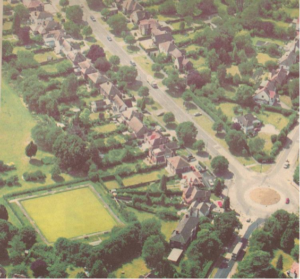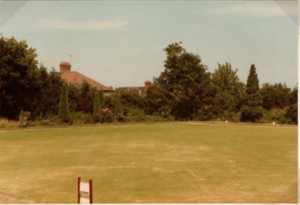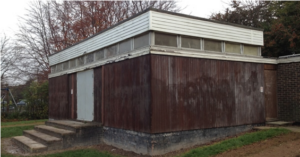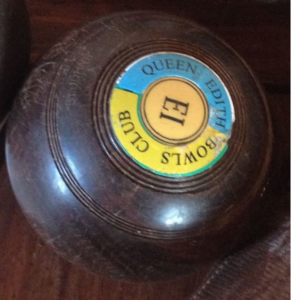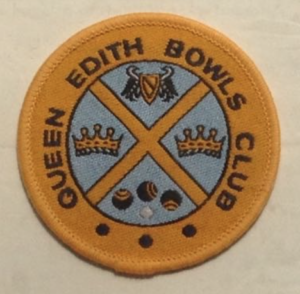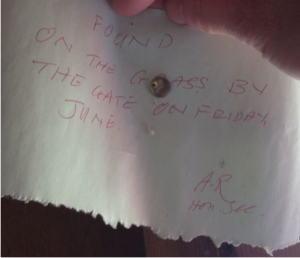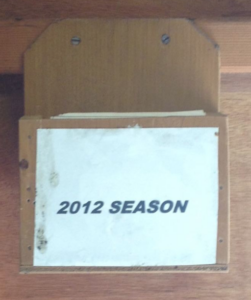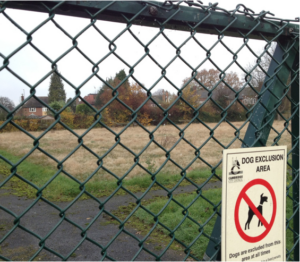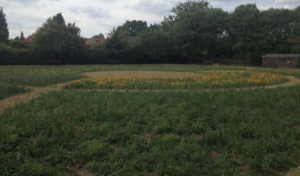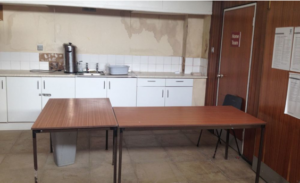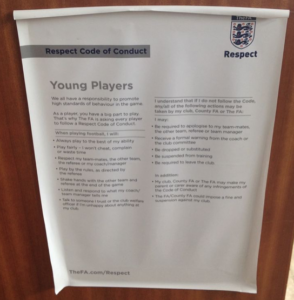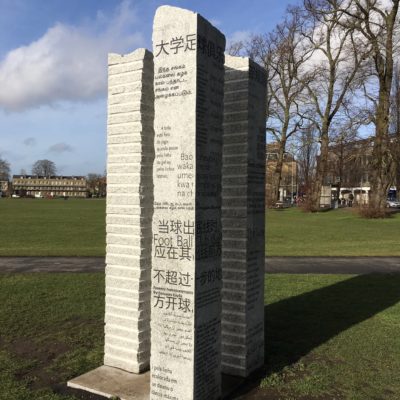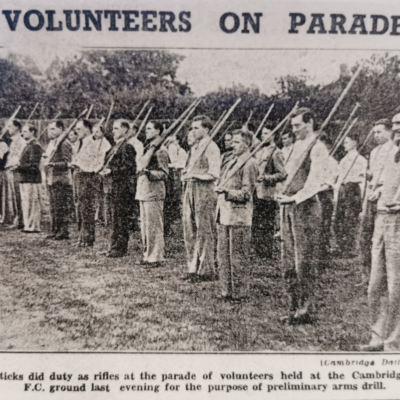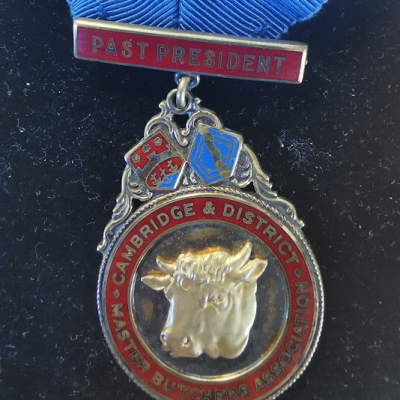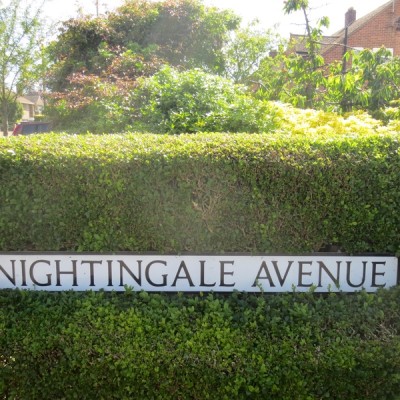Search by topic
- archaeology
- Building of Local Interest
- charity
- church
- crime
- dressmaker
- fire
- Great Eastern Railway
- Listed building
- Mapping Relief
- medieval
- oral history
- poverty
- Public House
- Rattee & Kett
- Religious House
- Roman
- scholar
- school
- Then and Now
- tudor
- women
- work
- world war one
- world war two
Search by text
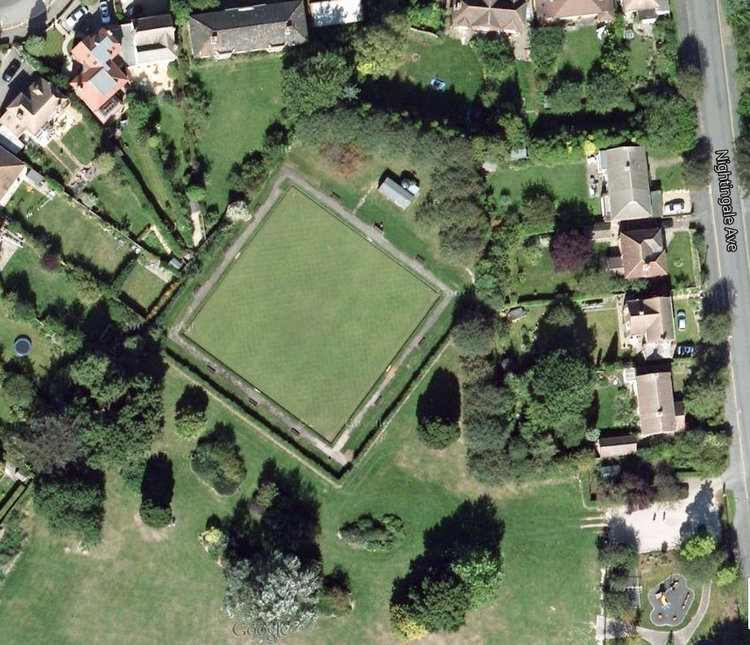
Nightingale Garden
History of Nightingale Garden, Nightingale Avenue
Rebecca Jones (2023) has kindly provided this information about Nightingale garden:
Why ‘Nightingale’?
According to Jerry Lander’s local history of Queen Edith’s, the avenue, park, and bowling green, were named after Florence Nightingale, because the land was owned by St Thomas’ Hospital, London.
What was there before the park?
The surrounding land was probably drained after 1825 and looks (from maps and photos) like it was farmland before the 1960s.
History of the bowling green
We think the bowling green was created after 1962 but before 1968 (from aerial photos and maps in the local collection). It looks like it was built on farmland. The tall mixed hedge around the bowls area is relatively recent. According to someone who was an apprentice groundsman, it used to have a low fence around it. It is now a secured area with a rota of volunteers opening the gate each day.
This picture is from a now deleted Facebook page on ‘Cambs bowls and it’s history’. Note, there was only a very short hedge around the green.
This picture is from the same source.
Bowls clubs at Nightingale
According to records in the local collection, two bowls clubs seem to have used the bowling green from at least 1971 to until at least 1989: Fulbourn, and Lilley’s (maybe, the staff club from Eaden Lilley department store). In 2014, Fulbourn had its own bowling green but it might be a different club. See also ‘timeline’ below.
Timeline of the park and bowls club based on information available at the Cambs Collection:
Bowls clubs handbook 1927: no listing for ‘Queen Edith’s Bowling Green’ or ‘Fulbourn’ and ‘Lilley’s’
Bowls clubs handbook 1941: no listing for ‘Queen Edith’s Bowling Green’ or ‘Fulbourn’ and ‘Lilley’s’
Tues 18 September 1951, In Cambridge Evening News ‘Cherry Hinton Green Wedge’ new land for housing.
Map for 1960. Park not on the map, some houses on Fendon Way. No Nightingale Avenue yet.
Bowls clubs handbook 1961: no listing for ‘Queen Edith’s Bowling Green’ or ‘Fulbourn’ and ‘Lilley’s’.
Aerial photo 1962 (No. 5664530). Boundaries of park there, small trees in some areas, looks like a games pitch in the centre, no pavilion, playground or bowls green.
Map for 1968/9. Park on map, with pavilion and bowling green, Nightingale Avenue and more housing.
Bowls clubs handbook 1971: ‘Queen Edith’s Bowling Green’ used by ‘Fulbourn’ and ‘Lilley’s’
27 October 1972. CEN. Application by Nightingale Avenue resident for the recreation ground [doesn’t name it] to be locked at night refused.
Bowls clubs handbook 1973: ‘Queen Edith’s Bowling Green’ used by ‘Fulbourn’ and ‘Lilley’s’
Map for 1973. Park is on the map, as today.
1974. Parks Dept records – facilities. ‘Queen Edith’s Recreation. Pavilion – postwar; Two dressing rooms; Toilets, inside; Large room; Kitchen and public toilet; Car park; Tennis, hard; Bowls; Kick-about football; Rugby; Swings; See-saw; Roundabout; Swing-boat; Log piles.’
Bowls clubs handbook 1974, 1975: ‘Queen Edith’s Bowling Green’ used by ‘Fulbourn’ and ‘Lilley’s’
Bowls clubs handbook 1977: ‘Queen Edith’s Bowling Green’ used by ‘Fulbourn’ and ‘Lilley’s’
Bowls clubs handbook 1979: ‘Queen Edith’s Bowling Green’ used by ‘Fulbourn’ and ‘Lilley’s’
Bowls clubs handbook 1989 (most recent): ‘Queen Edith’s Bowling Green’ used by ‘Fulbourn (contact: E Menick)’ and ‘Lilley’s (contact: RJ Mallabon)’.
15 March 2003, Cambridge News. ‘Arthur Roberts, secretary of the Queen Edith’s Bowls Club, says the new season is around the corner and new members are always welcome. You can be any age from nine upwards, experienced or novice. The club plays at Nightingale Avenue and further information can be sought from Arthur…’
From at least 2003 to 2013, there was a Queen Edith bowls club, now ‘dissolved’. The Council tried ‘for two years’ to find new players for the green.
16 November 2007. Planning application for multi-games area, and peripheral footpath. Called Nightingale Recreation Ground, with catchment area of 0.4 km. Categorised as ‘neighbourhood-equipped area for play (NEAP)’. Footpath to be ‘1.8m width, 1593m2 in red/orange Carstone’.
19 July 2010. CEN. New Multi-games area opened.
June 2011. Draft Open Spaces plan. City Council: Queen Edith’s ward, ‘Nightingale Avenue Recreation Ground (P&G 14) has a good range of facilities and is clearly visited by many local residents… Whilst the condition of Nightingale Avenue Recreation Ground is generally good, the pavilion is in poor condition and the pitches may be subject to heavy usage for formal sports as a result of the loss of sports provision at Bell School. ‘Opportunities: Enhancement of the pavilion at Nightingale Avenue Recreation Ground and of the children’s play spaces at Gunhild Way (CYP 11) and Holbrook Road (CYP 24). ‘Protected space: Nightingale Avenue Recreation Ground – public – size: 5.09 (units). Map of it as ‘public protected space’.
17 October 2013. Arthur Rank Hospice. ‘The charity were delighted to, yesterday, accept two cheques totalling over £2200 from the Queen Edith bowls club. Members from the club, which is sadly now dissolved, enjoyed a cup of tea and a biscuit whilst presenting Donna Talbot, fundraising & marketing manager, with the donation in the day therapy lounge at the Hospice’.
History of the old pavilion
It is difficult to find anything out about the history of the pavilion:
The old pavilion before it had a coat of preservative. It was demolished in 2022 and is being rebuilt in 2023.
Objects found in the bowls club hut:
This photo is from before garden volunteers started working with the Council on the new garden.
13 January 2014
City Council – about S106 developer contributions. Six options identified for South area. Recommended… ‘(i) earmarks up to £200,000 of devolved outdoor sports contributions for the proposed new pavilion at Nightingale Avenue Recreation Ground in advance of the receipt of community facilities contributions expected from the development of the Bell School site and (ii) instructs officers to make preparations (including further local consultation) for developing the proposals for the proposed new pavilion at Nightingale Avenue Recreation Ground… the pavilion at Nightingale Avenue Rec Ground is also on the ‘on hold’ list of the Capital Plan because the funding needed for this project is not yet due to be paid. It has been long understood that this project would be part-funded from community facilities contributions from the Bell School development (06/0795/OUT), which are still awaited. Whilst the prospect of development (subject to planning approval) is still some way off, a Reserved Matters application for this site was received last autumn and it will be interesting to see how this progresses over the coming year.
‘New pavilion at Nightingale Avenue Rec Ground: Given new demands for sports provision arising from the Bell School development, officers see a strong case for a new pavilion here. As well as providing improved changing facilities, there have been calls for it to include community meeting space, possibly a community café. Likely cost now £300 k-£400 k (possibly 50:50 outdoor sports:community facilities). Would meet the growing demand for more and improved local sports and community facilities provision in the context of local housing growth. Much local support for the proposals. Cherry Hinton Lions FC make use of the sports pitches at Nightingale Avenue Rec Ground as well as Cherry Hinton Rec. The local design proposals for a pavilion that emerged some years ago need refreshing given changing needs, expectations and assumptions about the running of community facilities. It may also be worth exploring other funding sources (eg,. Football Foundation) to help make devolved contributions go further. Would need planning permission.
‘A needs-based analysis to support proposed uses of a new pavilion is going to be particularly important in the financial context facing the council. It is very unlikely, for example, that the Council would have the resources to run a community café: it would either need to be offered to voluntary organisation to run or alternative arrangements for refreshments might need to be considered’.
In 2015, the Sports & Rec department at the City Council with the Friends of Nightingale Park worked up plans for a re-build of the pavilion to include junior changing rooms to Sports England standards, a multi-user community room with kitchenette, better storage and loos. An application was made in August 2015 for S106 funding, which was shortlisted for the December South Area Committee. Funding was agreed, and the new pavilion could have been built in 2017/18, depending on a successful planning process.
The bowls club and football teams used to use the old pavilion in the park. By 2015, it was rather bedraggled and is being re-built in 2023.
Football on the park
In 2015, Cherry Hinton Lions junior teams played on the Nightingale Rec, generally on Saturday mornings and during some weekday evenings.
In 2015, there was a great photo online of Cherry Hinton Lions under 10s team, sponsored by Institute for Metabolic Science , with Addenbrooke’s in the background (link now broken).
In 2015, on Sunday mornings, there was a long-established drop-in social football meet up.
History of the Community Garden
2013 the Queen Edith’s Bowls Club ceased using the bowling green.
2013 to 2014: The idea of an orchard or community garden/green-space started to be discussed.
Summer/Autumn 2014: a new Friends of Nightingale Park group started.
February 2015: a new native hedge was planted with Papworth Owl and other volunteers.
Spring 2015: some beds and paths were marked out in the bowling green area, glyphosate treated, rotavated and annual seed sown.
July 2015: the ditches were filled so the gates could be safely opened.
July 2015: we held a wild weekend in the garden and park.
Summer 2015: evening social walk in the park and opportunity to meet up in the garden.
Autumn 2015: the gardening for health and Cambs Headway groups started working on the garden.
December 2015: we held a winter festival in the garden.
14 December 2015: recommended for S106 open spaces funding, which funded some of the changes required.
December 2015: club hut roof repaired, water butt stands made, compost bins made, bug hotel started.
11 and 15 January 2016, the gardening for health groups re-started.
March 2016: a Gardening for Health group was re-funded for around 15 weeks (to 12 July).
March 2016: we started a weekend social gardening time (Sundays from 2pm to about 4pm, weather allowing).
18 July 2016: second social gardening group started on Monday afternoons.
26 September 2016: S106-funded work started with the ramps.
May 2018: a new constituted group Nightingale Gardeners formed. It works in close collaboration with City Council Streets and Open Spaces staff and volunteers.
2014–2023: Rebecca Jones, former garden co-ordinator has many photos of the community garden’s development and activities. You can contact her via the Queen Edith’s Community Forum.
Contribute
Do you have any information about the people or places in this article? If so, then please let us know using the Contact page or by emailing capturingcambridge@
License
This work is licensed under CC BY-NC-SA 4.0





